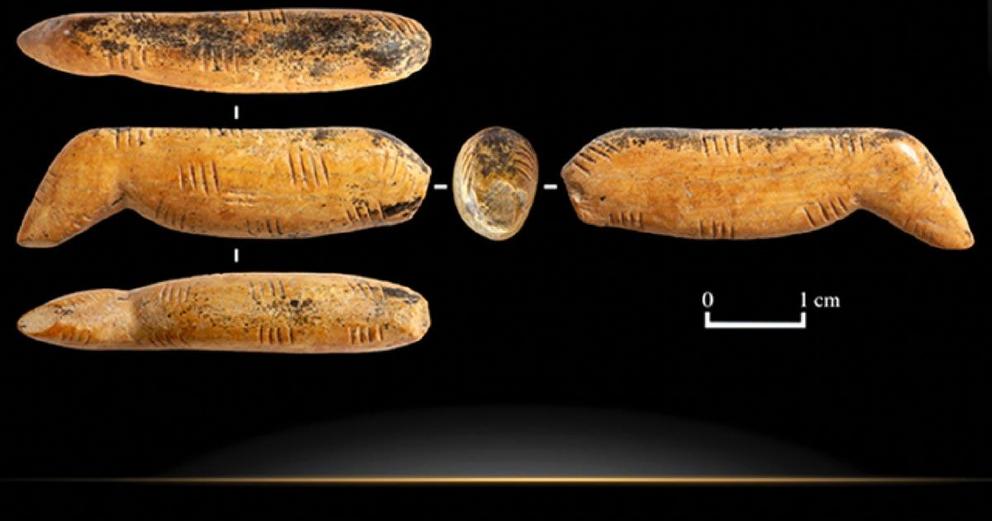45,000-year-old cave lion figurine uncovered at Denisova cave
The cave lion figurine found recently in Siberia’s Denisova Cave.
Another sensational first for the Denisovans, supporting their advanced nature. From the Siberian Times of November 20, 2019 comes news that archaeologists working within the Denisovan layer in Siberia’s Denisova Cave have found a 45,000 year old cave lion statue made from woolly mammoth tusk. It is abstract in form showing just a body, underbelly and hind legs, its head being sadly missing. There are no front limbs.
Across the surface of the body are series of inscribed lines, presumably signifying fur. These marks are in groups of four, showing an artistic style that has been well thought out and executed, the entire piece being polished afterwards. In all there are 18 “rows” of these inscribed notches across the body, a figure that might raise an eyebrow or two as this is the number of years in an eclipse cycle, known in Chaldean and Babylonian astronomy as a saros.
Oldest Animal Effigy
The great age of this beautiful art object, tentatively put at 40,000-45,000 years, corresponding with the Early Upper Paleolithic age, makes it the oldest representation of an animal found in Siberia, North Asia and arguably even in the world, meaning that the Denisovans, who occupied the cave at this time, must - in the absence of any modern human activity being found there - be credited with this magnificent achievement.
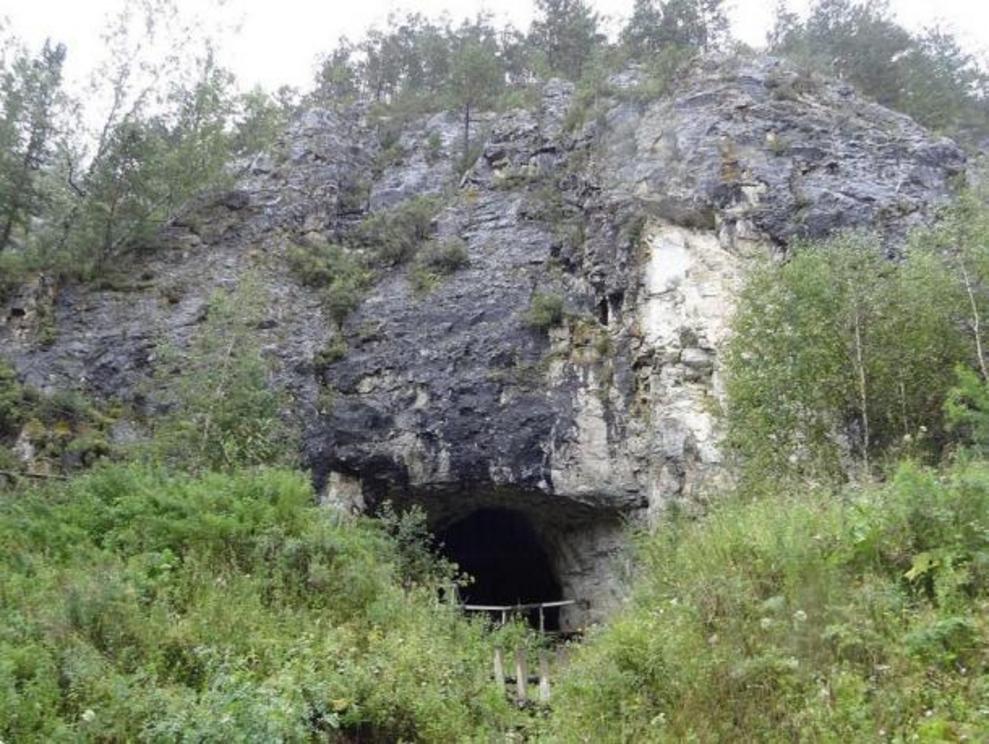 The Denisova Cave in southern Siberia.
The Denisova Cave in southern Siberia.
The art object is quite small, being just 42mm long (1.75 inches), 8mm thick (0.31 inches) and 11mm high (0.43 inches). It is thought to represent a cave lion ( Panthera spelaea ), an animal that, during the last ice age, would inhabit the valleys of the Altai Mountains in which the Denisova Cave is located in southern Siberia.
It was found inside the 11th layer of the southern gallery of the Denisova Cave, this already being known as the Denisovan layer. Here, for instance, back in 2008 archaeologists found a tiny finger bone that would afterwards be sequenced to reveal that it belonged not to a Neanderthal or anatomical modern human, but to a previously unknown hominin species that would come to be called the Denisovans after their initial place of discovery.
In age, the Denisova cave lion beats by many thousands of years the Lowenmensch figurine or Lion-man of Hohlenenstein-Stadel found in a German cave in 1939. This is thought to be between 35,000 and 40,000 years old, which is slightly younger than the new figurine found in the Denisova Cave.
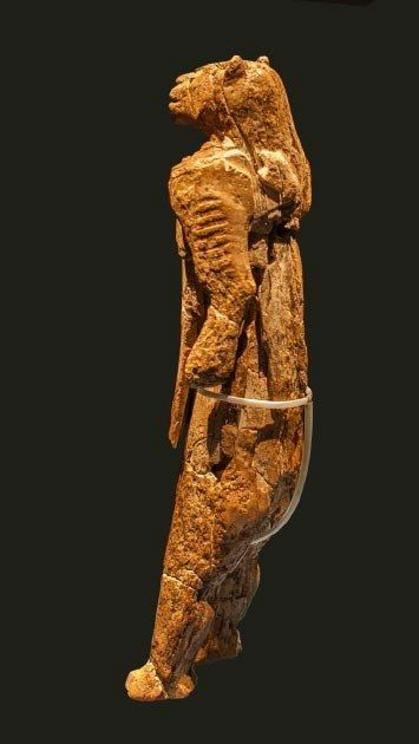 The Lowenmensch figurine or Lion-man of Hohlenenstein-Stadel found in 1939.
The Lowenmensch figurine or Lion-man of Hohlenenstein-Stadel found in 1939.
Talents of the Denisovans
Previous to now, the Siberian Denisovans who lived in the Denisova Cave have been accredited with advanced human behavior of an unparalleled level including the first bone needles, the first musical instrument in the form of a whistle or flute, the first arm jewelry in the form of a green chloritolite bracelet , the earliest stone microblade production, and arguably even the earliest known domestication and riding of horses. Now we can add to this list the earliest manufacture of animal figurines.
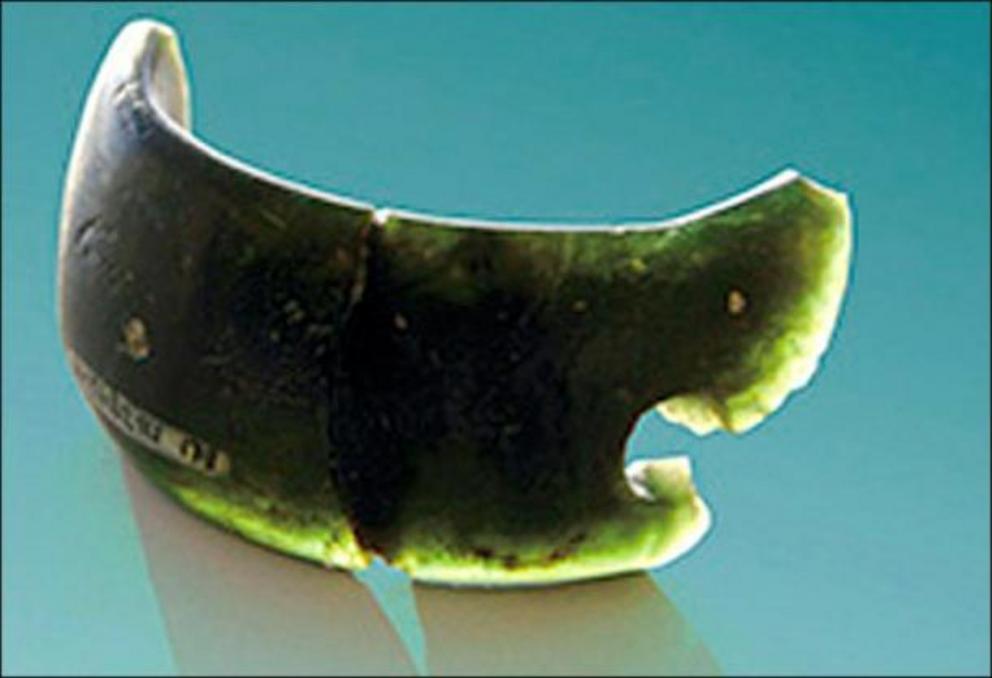 The Denisovan Bracelet made of chloritolite and found in the Denisova Cave.
The Denisovan Bracelet made of chloritolite and found in the Denisova Cave.
Another importance in the discovery of this mammoth tusk art object is its similarity in style to a large number of mammoth ivory art objects found at the 24,000-year-old site of Mal’ta in southern central Siberia. They include animal figurines, representations of females either naked or dressed in fur garments, and a number of carved swan pendants. Although these art objects belong to a slightly later age, corresponding to the Middle Upper Paleolithic, they bear the same artistic style as the lion figurine from the Denisova Cave. This could suggest that one of the places that benefitted from the artistic legacy of the Denisovans was the Mal’ta community, which thrived some 20,000 years after the disappearance of the Siberian Denisovans around 45,000 years ago.
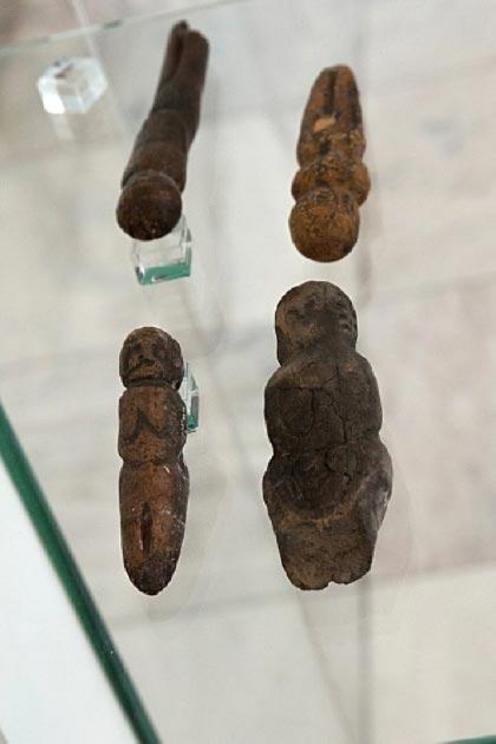 Art objects made of mammoth ivory from the 24,000-year-old Mal’ta site in southern central Siberia.
Art objects made of mammoth ivory from the 24,000-year-old Mal’ta site in southern central Siberia.
All of this is yet further confirmation of what I have written in my books featuring the achievements of the Denisovans. I have cited their advanced nature, and how, very likely, they passed on the rudiments of civilization to the earliest modern humans to have reached the area around 40,000 to 45,000 years ago. For those wishing to learn more read The Cygnus Key (2018) and Denisovan Origins (2019), co-authored with Greg L. Little.

